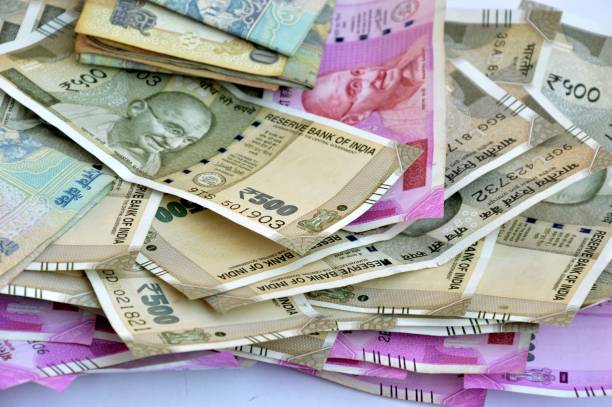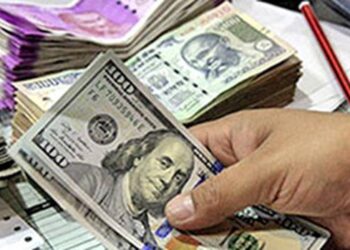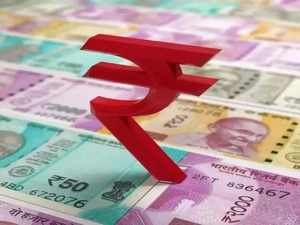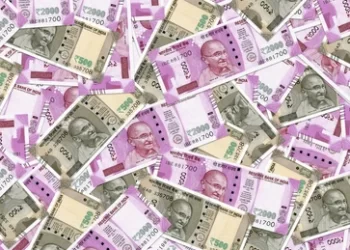Due to heavy selling pressure in domestic equities and rising crude prices in overseas markets, the rupee fell 76 paise to close at 82.61 against the US dollar on Tuesday.
Furthermore, forex dealers reported that investors were concerned about continued foreign capital outflows ahead of the RBI’s policy announcement on Wednesday.
The local unit opened weak at 81.94 on the interbank foreign exchange market, then fell further to end at 82.61, a 76-paise loss. The local unit recorded an intraday high of 81.94 and a low of 82.63 during the day.
The rupee had dropped 52 paise to 81.85 against the dollar in the previous session on Monday.
The dollar index, which measures the strength of the US currency against a basket of six currencies, fell 0.05 percent to 105.24.
Brent crude futures rose 0.64 percent to USD 83.22 per barrel, the global oil benchmark.
The 30-share BSE Sensex fell 208.24 points, or 0.33 percent, to end at 62,626.36, while the broader NSE Nifty fell 58.30 points, or 0.31 percent, to 18,642.75.
According to exchange data, foreign institutional investors (FIIs) were net sellers in the capital markets on Monday, selling shares worth Rs 1,139.07 crore.
The World Bank raised its GDP growth forecast for India to 6.9 percent for 2022-23, citing the economy’s increased resilience to global shocks.
The World Bank stated in its India Development Update that the revision was due to the Indian economy’s greater resilience to global shocks and better-than-expected second-quarter numbers.
The Reserve Bank’s rate-setting panel began discussing the next round of monetary policy on Monday, with expectations of a moderate interest rate hike of 25-35 basis points as inflation begins to ease and economic growth slows.
Since June, the RBI has raised the key benchmark lending rate by 50 basis points (bps), in addition to an off-cycle 40 bps increase in the repo in May.
At the conclusion of the three-day Monetary Policy Committee (MPC) meeting on Wednesday (December 7), RBI Governor Shaktikanta Das will announce the bi-monthly monetary policy.
Source:FE







 Finance
Finance






